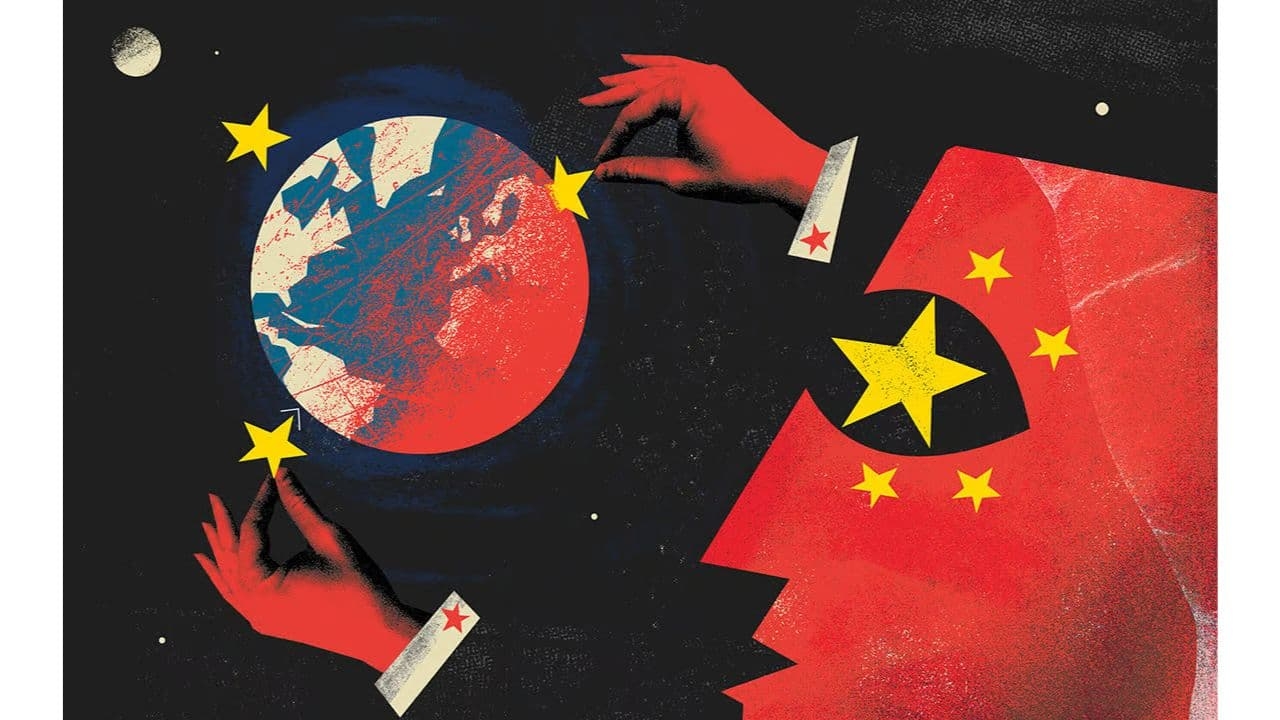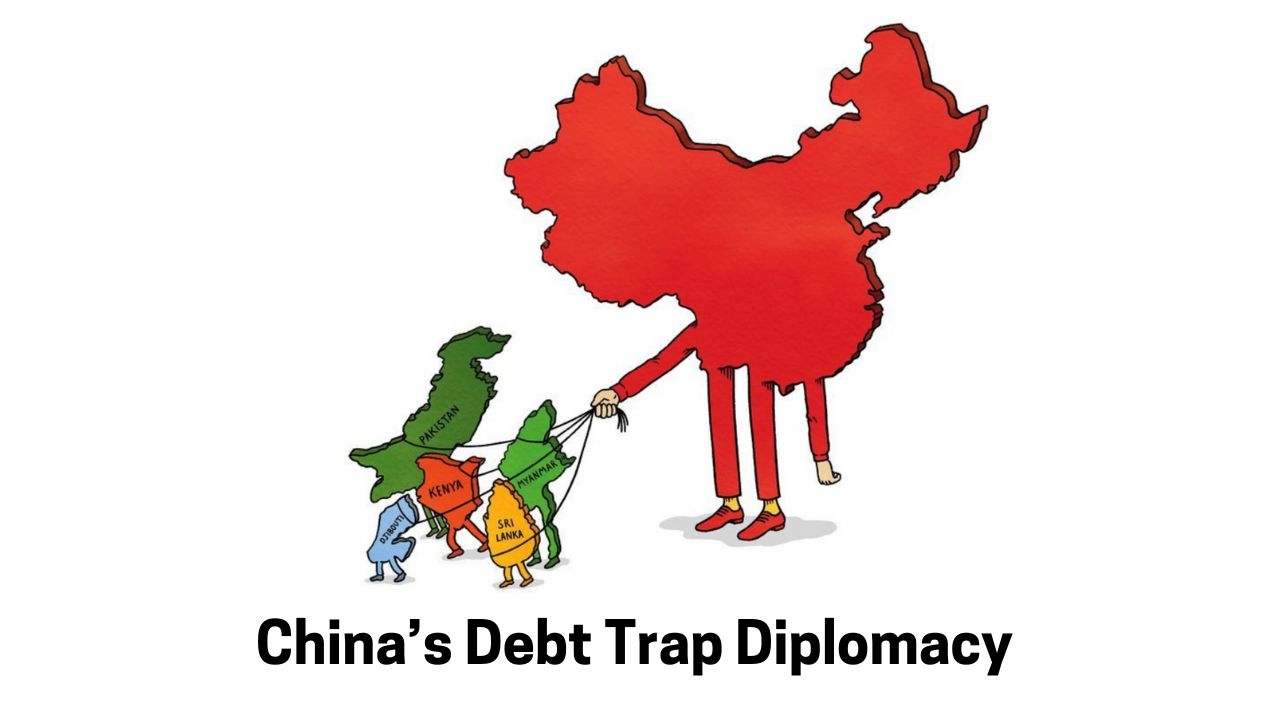Communist China’s Exploitation: Manipulating Neighbors for Economic and Strategic Dominance
China has been extending large loans to developing countries for infrastructure projects, entrapping these countries in unsustainable debt. Being unable to pay back the monetary loan amount, Sri Lanka and Laos are two such countries that have succumbed to refinancing—yielding up strategic assets like ports and special economic zones alike—to China.
Total Views |

The major concerns over the issue have been raised by the direct neighbouring nations of China, driven by aggressive expansionist policies and exploitative economic practices. This article discusses how Communist China taps its power in both the economy and geopolitics to influence, manipulate, and exploit its neighbours, eliciting trails of economic dependence, environmental degradation, and political instability.
Southeast Asia: Economic Overreach and Environmental Impact
The effects of China's BRI on Southeast Asia have been palpable, with quite mixed results. Indeed, it has delivered very underpinning infrastructure, but it has also given way to important challenges. In Indonesia, the BRI has grown from mere road and rail construction to urban development. However, the main problems with its operation lie in transparency, accountability, and risk management. It is these huge projects that put the social well-being of Indonesian citizens at risk, executed sometimes with less regard to proper planning and consideration of their environmental and social impacts.
In Cambodia, the BRI has upgraded infrastructure and connected some rural areas to the capital while boosting the local economy. Despite these benefits, many concerns still linger regarding corruption, labour exploitation, and environmental degradation. Most large-scale Chinese investments are driven by the need for development at breakneck speed, which comes at the cost of sustainability, affecting local communities and their ecosystems.
Although Vietnam has officially rolled out the red carpet for BRI, the challenges remain much alike. Most BRI projects in Vietnam are surrounded by a lack of transparency, face delays, come at high costs, and have an extremely non-transparent bidding process. In such scenarios, the benefits these projects bring to the socio-economic domain are superseded by the financial and political risks they pose.
Central Asia: Water Hegemony and Resource Exploitation
The case of China's control over the water resources of Central Asia is highly representative of its exploitative practices. As the upstream hegemon in terms of water, China controls the flow of key transboundary rivers crucial to Kazakhstan, Uzbekistan, and other Central Asian countries. Its vast damming and water diversion projects portray an acute water shortage and environmental degradation downstream. For example, water intake from the Illy and Irtysh rivers could result in the shrinking of Kazakhstan's Lake Balkhash and disturb water supplies in Russia.
Specifically, particularly the activities of China in the Xinjiang region have been a huge addition to these issues. Industrial pollution, along with intensive attention or water use for energy, manufacturing, and agriculture, becomes hazardous for the transboundary waters of Central Asian countries and poses some very acute ecological and human rights problems.
South China Sea: Territorial Aggression and Environmental Destruction
China coupled its territorial claims over the South China Sea with huge tensions between it and its neighbours, notably the Philippines, Vietnam, Malaysia, and Brunei. Its construction of artificial islands and military installations is causing the destruction of marine ecosystems and coral reefs and poses a threat to the livelihoods of local fishing communities. Besides, the aggressive enforcement of maritime claims brings confrontations with neighbours, hence undermining regional stability and cooperation.

The Debt Trap Diplomacy
Another critical aspect of the exploitation strategy driven by China is its "debt trap diplomacy." Through BRI, China has been extending large loans to developing countries for infrastructure projects, entrapping these countries in unsustainable debt. Being unable to pay back the monetary loan amount, Sri Lanka and Laos are two such countries that have succumbed to refinancing—yielding up strategic assets like ports and special economic zones alike—to China. This practice not only erodes the sovereignty of these nations but equally allows geopolitical influences to spread over Asia.
Human Rights and Labor Exploitation
The BRI has been subject to a myriad of accusations concerning human rights violations and exploitation of labour. Chinese companies in most BRI countries have been accused of exploiting local labour, violating working laws, and failing to protect the safety of workers at workstations. This has caused social unrest and severely dented the image of China as a responsible global player.
Pakistan: A Case Study of Exploitation
Another dimension of China's exploitative practices can be located in its relationship with Pakistan, particularly under the CPEC ambit, which is a flagship project of BRI. This segment shall look into how China has capitalised on Pakistan's economic vulnerabilities and caused grave economic, ecological, and social consequences for this South Asian nation.
Economic Dependence and Debt Traps
This $62 billion CPEC is being projected as a game changer for Pakistan's economy, including infrastructure development, energy projects, and connectivity. The reality on the ground is very different.
“The huge loans from China for these projects have, therefore, tremendously inflated its indebtedness. By 2023, Pakistan had to pay around $30 billion to China, which be approximately 35 percent of its total external liabilities.”
This has exposed Pakistan to the risk of falling into a debt trap, much like many other countries that constitute the BRI. The inability of Pakistan to generate sufficient revenue from CPEC projects in order to service these debts has resulted in a precarious financial situation. The conditions for these loans, normally secret, bring forth questions regarding the economic sovereignty and long-term financial sustainability of Pakistan.
Exploitation of Natural Resources
China's interest in Pakistan goes beyond infrastructural development to the exploitation of natural wealth. The Gwadar Port, one of the salient features of that CPEC, has been responsible for the displacement of various local communities and causes marine ecosystems to deteriorate. Chinese fishing fleets in Pakistani waters are hauling away local fish stocks, jeopardising the means of livelihood for local fishermen.
Besides that, Chinese firms have been engaged in mining projects within Pakistan, extracting highly valuable minerals and resources with total disregard for sustainable environmental concerns. Activities associated with this have massively caused environmental degradation in the form of deforestation, soil erosion, and water pollution, which added to the misery of the locals.
Labor Exploitation and Social Unrest
The influx of Chinese workers to Pakistan for the execution of CPEC projects has added tension within the nation. Usually, the local labourers are sidelined in work, and hence, a very high unemployment rate adds to social unrest. There have been reports of poor working conditions, low wages, and violations of labour rights that have surfaced as pointing at the exploitative nature of such projects.
The enhanced military presence of the government in areas like the Balochistan region, due to insecurity from Chinese investments, has raised opposition from local insurgents who do not favour the exploitation of their resources by foreigners. This has led to frequent clashes and a deteriorating security situation in the region.
Strategic and Military Implications
The strategic interest of China in Pakistan is not related only to its economic exploitation. Gwadar Port provides China with a critically important foothold in the Arabian Sea, which helps boost its naval capabilities and augments influence in the Indian Ocean region—something that sounds alarm bells in neighbouring India and other forces across the region who see Chinese growing presence as a threat to regional security and stability.
In addition, military relations with Pakistan have been enhanced since 1997 by selling advanced weaponry and developing joint defence projects. Surely, all this cooperation serves broader Chinese strategic interests connected with counterbalancing India's influence and projecting its power across South Asia.
Conclusion
In these practices towards its neighbours, it exposes a pattern of economic coercion, environmental degradation, and geopolitical manipulation. Even while able to spur some infrastructural development in participating countries, the BRI has created unsustainable debt for nations involved and instigated environmental degradation with social chaos.
As Chinese influence continues to surge, affected nations are better placed to demand greater transparency, accountability, respect for sovereignty, and human rights in dealings with China. The international community must hence support these nations so that they are able to avoid the exploitative practices directed towards them, attain real and sustainable development, and achieve regional stability.
Article by
Shomen Chandra
Sub Editor, The Narrative


